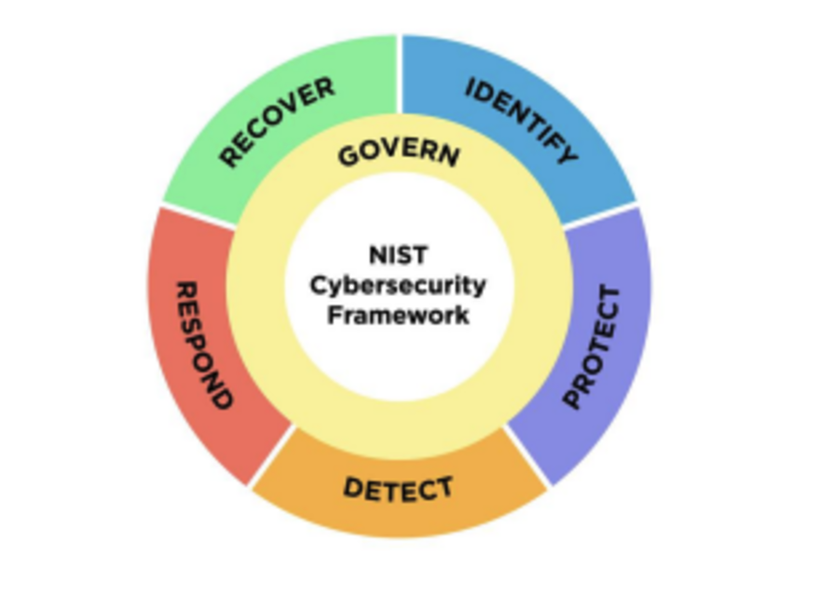In today’s digital healthcare landscape, organizations of all sizes face mounting cyber threats. Protecting sensitive patient data is crucial, not only for legal compliance but also to maintain trust with patients and stakeholders. The NIST Cybersecurity Framework (CSF) provides a flexible and structured approach to healthcare cybersecurity, helping organizations manage risks effectively. Whether you’re a small clinic or a large hospital, adopting the NIST CSF is a critical step to securing sensitive data.
What is the NIST Cybersecurity Framework?
The NIST Cybersecurity Framework (CSF), developed in 2014 by the National Institute of Standards and Technology, offers organizations a comprehensive guide to identifying and managing cybersecurity risks. It’s designed to be scalable and adaptable across various industries, including the healthcare sector. With the rise of cyberattacks in healthcare, such as ransomware and data breaches, implementing NIST CSF has become essential to safeguard patient information and protected health information (PHI).
The framework is built on six core functions:
- Identify – Understanding cybersecurity risks and assets.
- Protect – Implementing safeguards for critical healthcare services.
- Detect – Establishing mechanisms to recognize cybersecurity incidents.
- Respond – Developing plans to respond to cybersecurity threats.
- Recover – Creating protocols to restore services after an attack.
- Govern – Ensuring oversight and accountability for cybersecurity measures.
Why Healthcare Organizations Should Adopt NIST CSF
Compliance with HIPAA and Other Healthcare Regulations
Adopting the NIST Cybersecurity Framework helps healthcare organizations meet compliance requirements for regulatory frameworks like HIPAA (Health Insurance Portability and Accountability Act) and HITECH (Health Information Technology for Economic and Clinical Health Act). These laws require strict protection of patient data and PHI.
NIST CSF aligns with HIPAA’s Security Rule, ensuring that organizations implement the necessary administrative, physical, and technical safeguards to secure patient information. By adopting the NIST CSF, healthcare providers can streamline their compliance efforts and avoid costly penalties from HIPAA violations.
Mitigating Cyber Threats in Healthcare
Healthcare organizations are high-value targets for cybercriminals due to the wealth of sensitive information they manage. Cyberattacks like ransomware can disrupt operations, putting patient safety at risk.
The NIST CSF helps healthcare organizations proactively mitigate cyber threats by identifying vulnerabilities and implementing strong security measures, such as multi-factor authentication (MFA), encryption, and regular security updates. The framework’s “Detect,” “Respond,” and “Recover” functions ensure a rapid response to cyber incidents, minimizing damage and recovery time.
Scalability for Healthcare Organizations of All Sizes
A major advantage of the NIST Cybersecurity Framework is its scalability. Whether you’re a small healthcare practice or a large hospital network, the framework can be tailored to fit your organization’s size and resources. Smaller clinics, often seen as easy targets, can adopt NIST CSF to build a strong cybersecurity posture on a budget, while larger systems can customize the framework to address specific risks across departments and locations.
This scalability is crucial, as smaller healthcare organizations are often under-resourced when it comes to cybersecurity. By implementing NIST CSF, they can take a step-by-step approach to building a robust security infrastructure without overextending their resources.
Improving Risk Management in Healthcare
Effective risk management is essential in healthcare cybersecurity. The NIST CSF allows healthcare organizations to identify and prioritize the most critical risks, ensuring that resources are allocated to the areas that need them most.
A proactive risk management strategy prevents healthcare providers from scrambling in response to security breaches. The framework ensures organizations are prepared to respond to cybersecurity incidents with detailed incident response and recovery plans, minimizing disruptions to healthcare services.
Building Trust with Patients and Partners
Data breaches and cyberattacks in healthcare can significantly damage a provider’s reputation. Patients expect their healthcare providers to protect their personal information, and a single breach can lead to a loss of trust.
By adopting the NIST CSF, healthcare organizations can demonstrate their commitment to safeguarding patient data. This framework not only helps to secure sensitive information but also builds trust with patients, partners, and regulatory bodies. Establishing robust cybersecurity measures improves collaboration with third parties like insurance companies and technology providers, enhancing patient care.
NIST Cybersecurity Framework (CSF) for Healthcare Organizations – Infographic
This infographic visually represents the NIST Cybersecurity Framework (CSF), highlighting the core functions: Identify, Protect, Detect, Respond, Recover, and Govern. Each function plays a vital role in healthcare cybersecurity.

Conclusion and How PatientLock Can Help:
Adopting the NIST Cybersecurity Framework is strongly recommended for healthcare organizations of all sizes. Whether you’re looking to enhance compliance with regulations like HIPAA, mitigate growing cyber threats, or build patient trust, NIST CSF provides a scalable, comprehensive approach to managing cybersecurity risks. In an increasingly digital world, adopting this framework is a critical step for protecting patient data and ensuring the security and continuity of healthcare operations.
PatientLock helps organizations adhere to the NIST CSF through a strategically designed stack of technical (cybersecurity) tools, in conjunction with advisory services.
